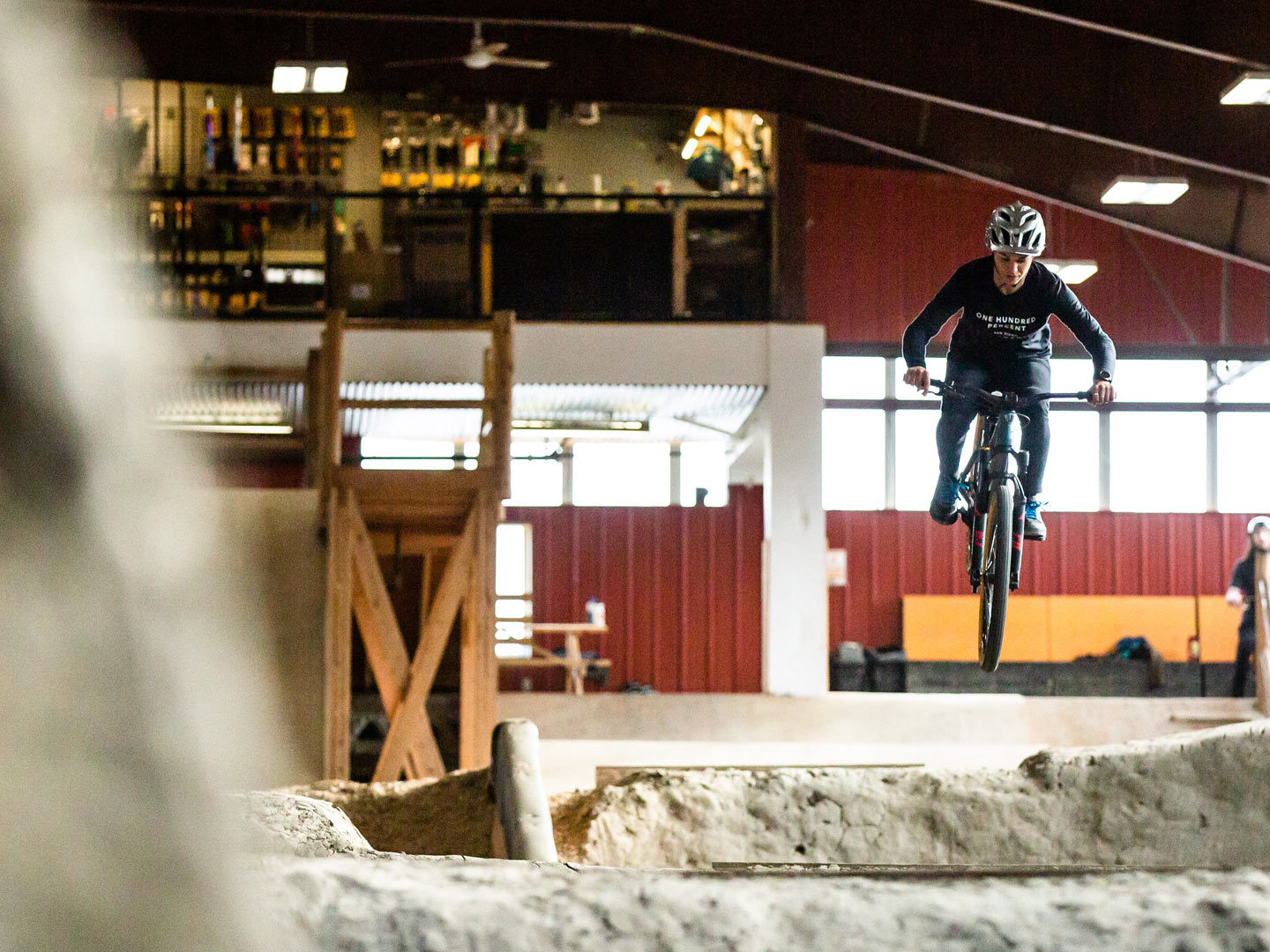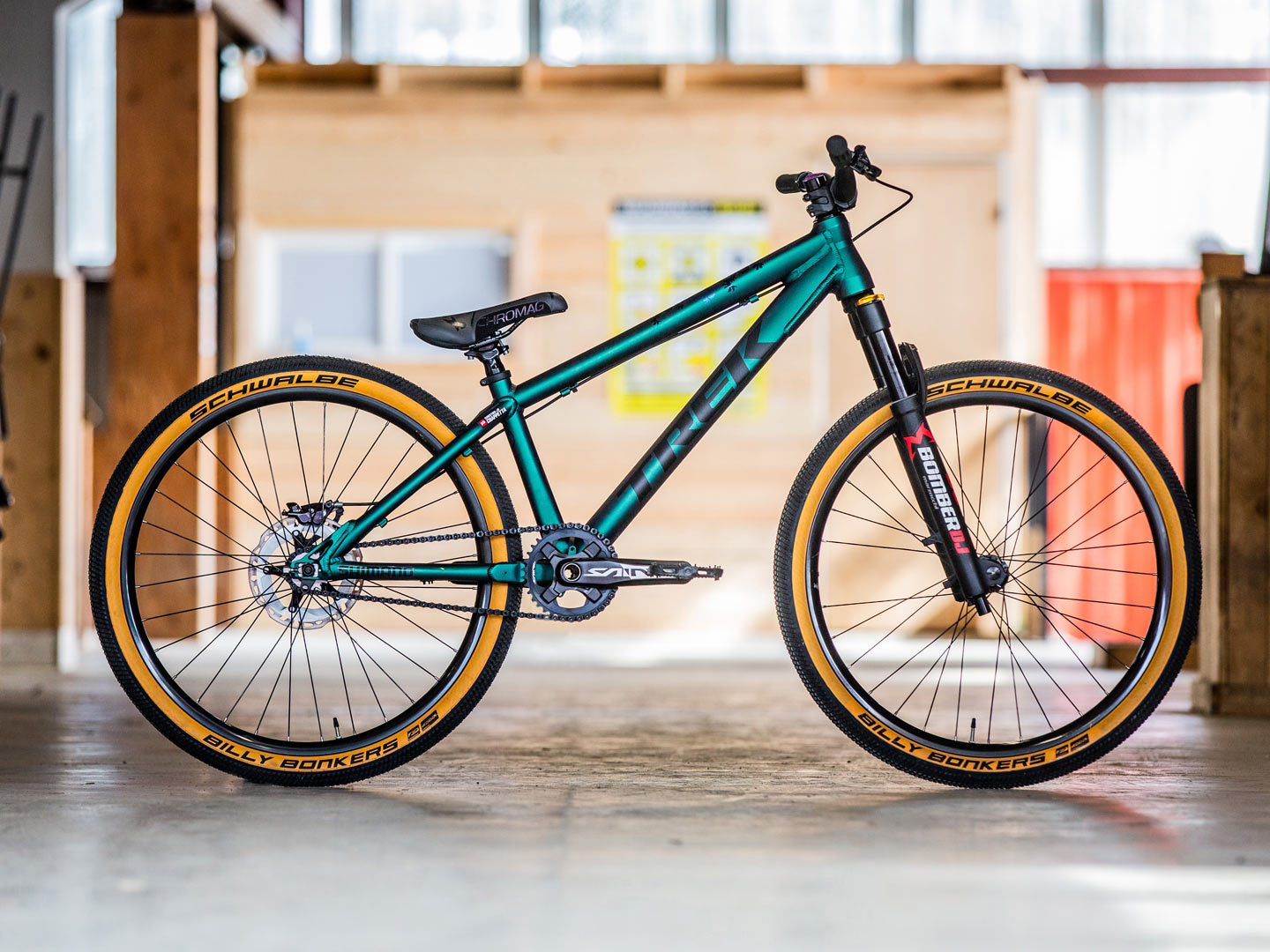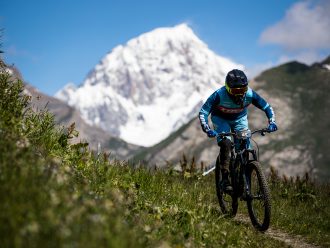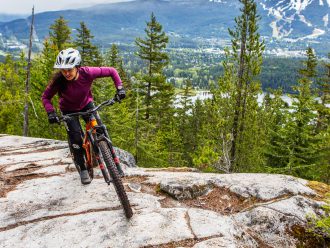Hitting the dirt jumps isn’t just for kids— it builds bike handling skills that translate and transition almost seamlessly to the trail. Whether you are reigniting a passion for the pump track or dabbling in dirt jumps for the very first time, these fundamentals will get you dialed to tackle jump lines at the park and take those skills straight to the mountain.
Knowing how to handle yourself and maneuver your bike when airborne will get you out of some pretty hairy situations. Unexpected jumps, steep landings, and rowdy terrain can send even the most trail-savvy rippers haywire, but when you know yourself, your bike, and how to move in the air, pulling a hat trick to stomp a sketchy step down becomes a walk in the park. It may take a little practice to get comfortable saying goodbye to gravity, but heading to your local dirt jumps is a good way to get the basics dialed. Saddle up and listen in for advice from Pinkbike’s Christina Chappetta @cchappetta1 as she heads to the dirt jumps.
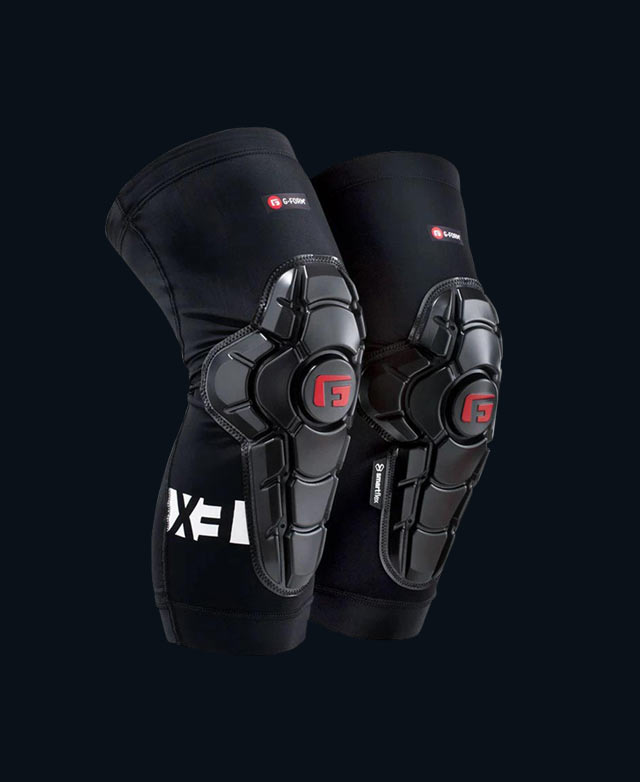
Arm yourself with the right protective gear before hitting the jumps for a boost in confidence as you step up skills, and a barrier to shield you in the event of a crash.
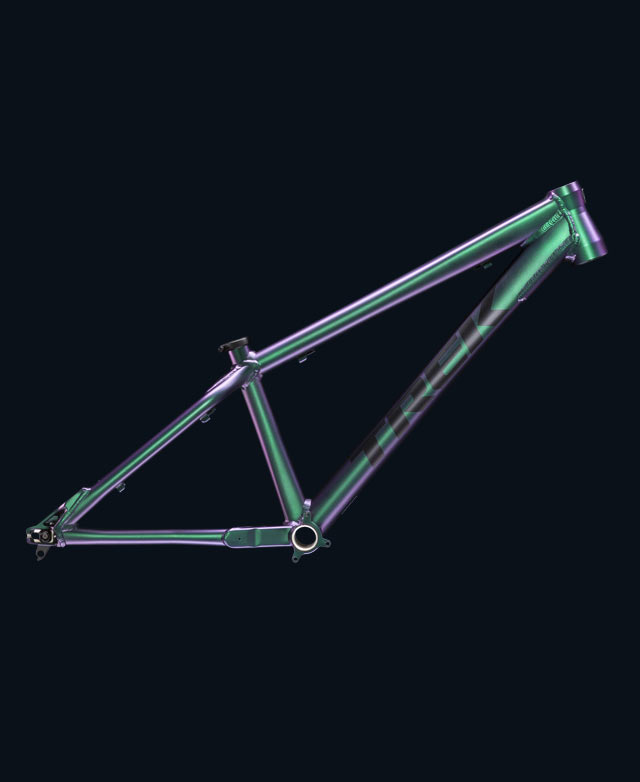
Get ready to launch with a purpose-driven Trek Ticket that's built to take on pump track sessions and big jump lines alike.
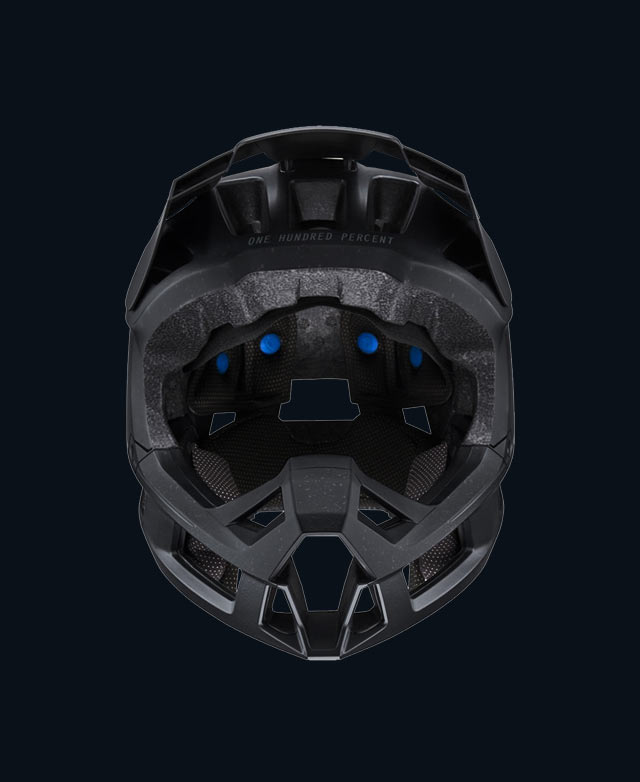
You only get one brain. Before hitting the dirt jumps be sure to put on a top-rated helmet for protection through your progression.
Setup
Building better bike handling starts with practice, but before you dive in it’s good to make sure you’ve got the right gear. Dirt jump bikes have a shorter wheelbase and smaller wheels than modern mountain bikes, making them nimble and easy to handle on short transitions and through quick turns in the pump track. And while rolling in with a dirt jumper will have you fitting right in at the park, you don’t have to splurge right out of the gates. Work with what you have, upgrade what you can, and improvise the rest.
Below are a few non-negotiables that we make sure to have on us before we head to any jump line.
1. Protect your melon
No matter what, wear a good helmet. Dirt jumping comes with inevitable bails, and while most scuffs and scrapes heal up quickly, you only get one brain. On hot days an open-face helmet will do the trick, but it’s never a bad idea to go all-out on protection and don a full-face when you’re dirt jumping. While full-face helmets have a higher buy-in price, they may save your wallet at the dentist later.
2. Shield your knees
Toss on a pair of knee pads to protect you from the inevitable bailouts we talked about before. Not only will they reduce impact when you crash, but tossing on body armor is a great way to up confidence for rolling into bigger jump lines, too.
3. The flats
We’ve said it before, and we’ll say it again: you’re probably going to have to bail at some point. Flat pedals make for easier exits off of the bike and also allow for more play in handling, so you can try different body positions, or throw down tricks once you’re getting the hang of things. A solid pair of flat shoes with stiff soles and tacky grip is key to keeping enough power in your pedal strokes, and decent control of your bike when you leave the dirt.
4. Your paws
Keep your digits on lockdown with gloves to protect your hands against run-ins with rough dirt, concrete, and mulch pits, and set yourself up for slip-free control with grips to keep your mitts from sliding around.
Hitting the dirt
Heading to your local dirt jumps for the first time can be intimidating, but remember that everyone else there was new to it once, too. Don’t be afraid to talk to other riders, and bring a friend along for camaraderie.
1. Moral support
Bringing along a friend is a great way to keep your confidence and stoke high at the dirt jumps. Whether they’ve been there before and can show you the ropes, or are just as new to the area as you, having someone to check out the lines with always makes the learning curve more enjoyable. But your friend doesn’t just have to be the person you showed up with— talk to other riders to make new friends and get to know the beta. They might have insight on what the speed is like, and if there are any weird jumps that take a specific run-in to clear.
2. Get warmed up
If the area you’re riding has a pump track where you can warm up your muscles, take a few laps around before heading to the bigger lines. Get used to the feel of your bike, pumping rollers, and hitting the berms to maintain speed without pedaling. If there isn’t a pump track, hammer out a few mellow laps on the smallest line.
3. Start small
Even if you’re seasoned in the air, start with the smallest line when you head to a new spot. Roll the jumps on your first lap without trying to get air, and then start picking them off one by one when you’re comfortable, airing and mastering each jump in a line before stepping up to bigger jumps. If you’re new to dirt jumping altogether, take your sweet time. Muscle memory isn’t instantaneous, and repetition is the best way to master the skill.
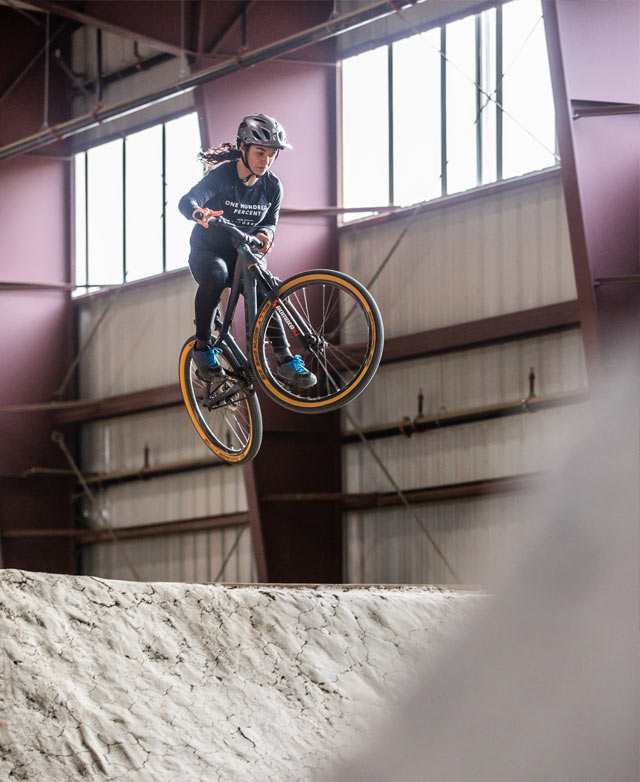
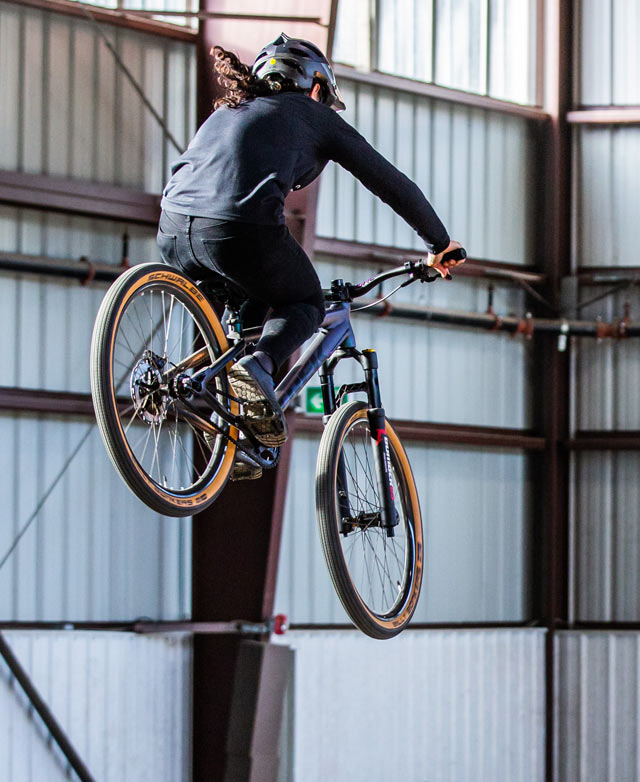
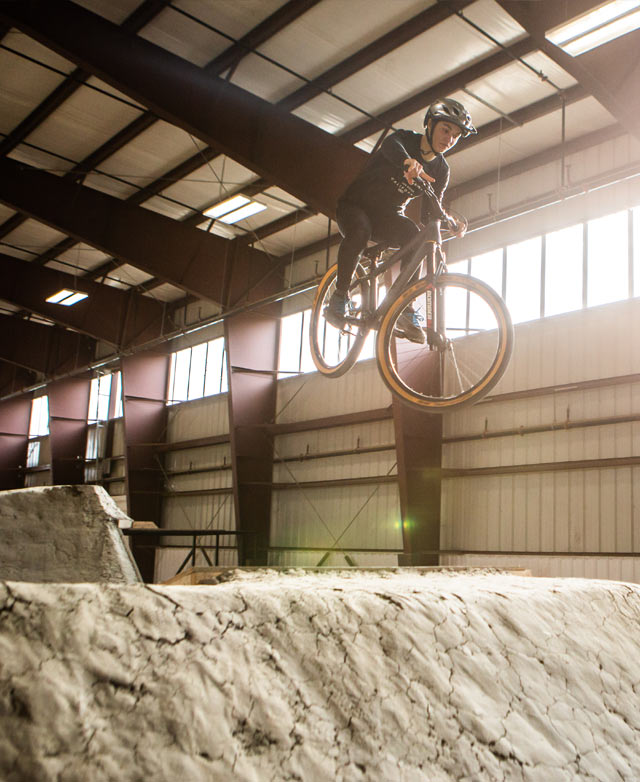
The right form for air-mail
Starting off with your body in the right form will set you up for smooth sending, even if you come up a little short to start. Before stepping up to bigger jumps and gaps, take on tabletops that offer low consequences if you case it, and are easy to roll for getting used to the transition. These tips will help you keep your form dialed once you’re ready for lift-off.
1. Stay neutral
When you’re rolling into a jump keep your body in a neutral position with elbows and knees bent and your center of gravity in the middle of your bike. Keep your eyes up, focusing on the takeoff.
2. Follow the lip
As you roll into the transition, pump your body with the lip and follow its trajectory, keeping equal pressure on the front and rear end of your bike so you don’t get bucked backward.
3. Spot your landing
Once you’re in the air, bring your bike up into your body, and keep your eyes focused on where you want to touch down.
4. Stomp it
Let your legs and arms absorb some of the impact when you touch down, and roll on into the next jump when you’re ready.
5. Progression
There’s a risk to reward ratio hidden somewhere in dirt jumping. The amount of risk you encounter will have a lot to do with your patience, and what happens to be available at your local dirt jumps. Taking time to really hone skills and give your muscles the repetition they need to get to know movements before stepping up will greatly reduce the risk factor. If your dirt jump park has a mulch pit, take advantage of it as a lower-consequence way to progress when you want to start going bigger.
When you’re ready to move to a bigger jump line try not to build it up too much in your mind. At the end of the day, it’s just another jump. It’s the same movement you’ve been working on, just a little bit faster. Stay loose and mobile in the air and you’ll master bigger jumps in no time.
Riding dirt jumps is intrinsically fun and gives you a clear perspective on your progress on the bike. It not only improves your physical bike handling but also alters your perspective as you read the trail and different features. Take on pump tracks and jump lines alike, dial-in skills, and when you’re ready, head to the trail and find a whole new playground ahead of you as your mind starts seeing doubles in rollers, and roots as new launching pads.
Did we miss your favorite tip? Drop it in the comments section below!

About the Author: Trek
Our mission: we build only products we love, provide incredible hospitality to our customers, and change the world by getting more people on bikes.


